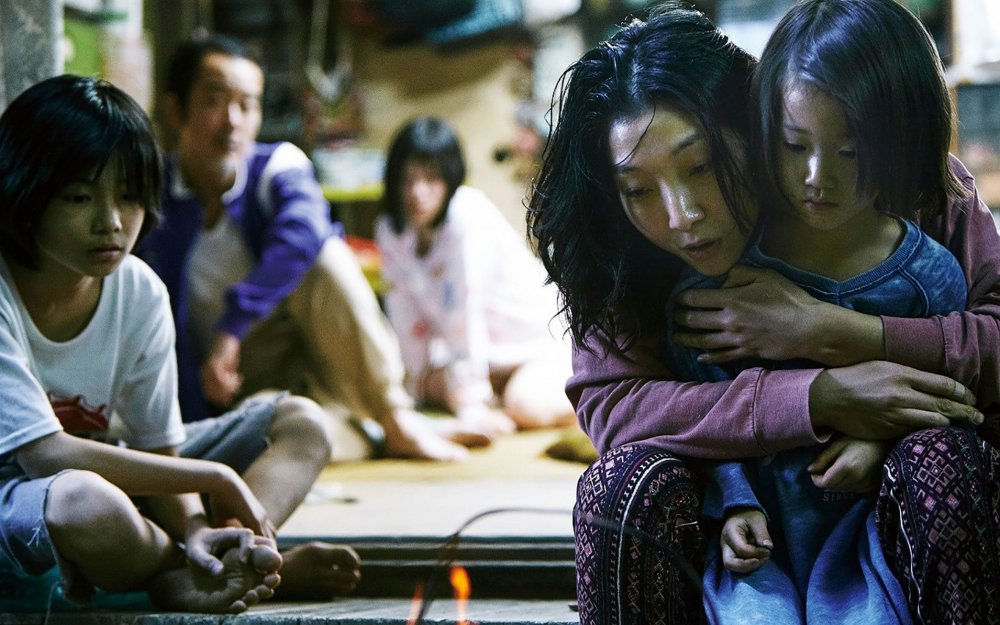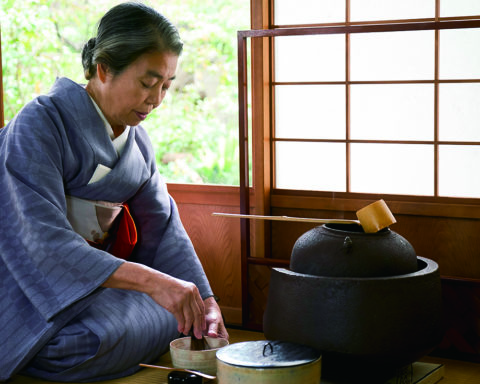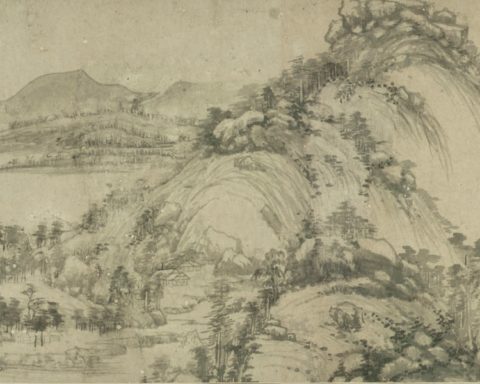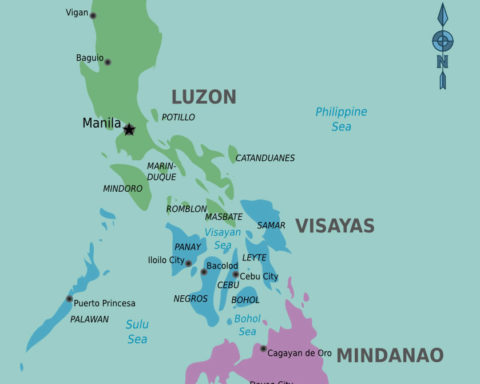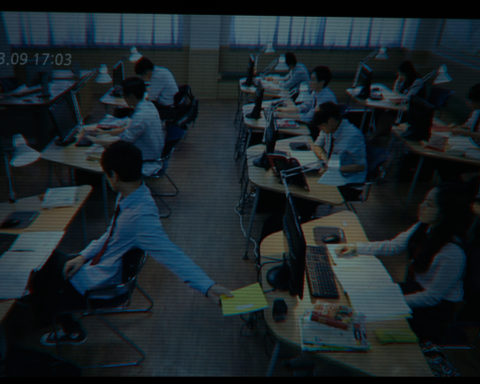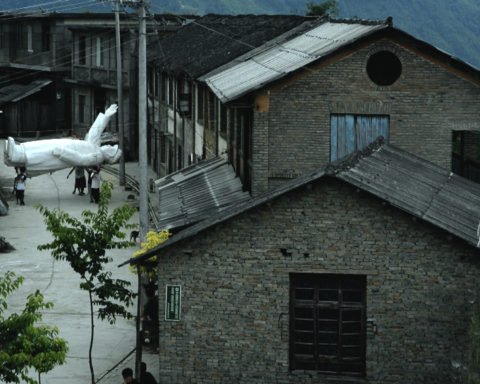Palme d’Or at the 2018 Cannes Film Festival, Shoplifters – not necessarily Hirokazu Kore-eda’s most accomplished movie – has, if anything, the merit of having brought some attention to the marginalised and underprivileged of Japanese society.
The social reality of the country is rarely discussed, even by Japanese media, due to a decade-long preconception that Japan had resolved class struggles and conflicts by effectively eradicating the problem of poverty. The exceptional speed at which the archipelago recovered from the dire state of ruins in which it found itself after the Pacific war, becoming by 1968 the second global economic power, had led to, in less than a generation, an important restructuring of the social fabric. Because of the strong economic growth which resulted in a sudden rise of living standards as well as a significant expansion of the middle class, a vast majority of Japanese citizens considered themselves the beneficiaries of a nation-wide success, believed to be accessible to all. Someone is poor as a direct consequence of his merit, or rather lack-of. The suggestion that, in reality, the promoted economic model couldn’t actually prevent social inequalities from flourishing, was briefly treated by a faction of independent cinema in the 60s, but soon became taboo and was swiftly replaced by the seductive myth of “100 million inhabitants, all part of the middle class” [1]. The commercial flop and corresponding critical response met by Akira Kurosawa’s 1970 film Dodes’Kaden which depicted the living conditions of a slum, is symptomatic of the general state of mind of that period.
The proportion of people living under the poverty threshold (coined at half of the median income of the total population) has been kept under the covers, insofar as the Japanese state has never released official statistics capable of measuring its extent. The poverty rate was only established in 2002 as part of the Human Development Report conducted by the UN. The study determined that the percentage of the population living under the poverty threshold was of 11.2%. In 2005, an OECD report updated this number – placing Japan in fifth position of the member countries with the highest poverty rates, behind Mexico, Turkey, the United States and Ireland. Heavily covered, the word was out: Japan’s reality was no longer in line with its advertised image of prevailing and indiscriminate prosperity.
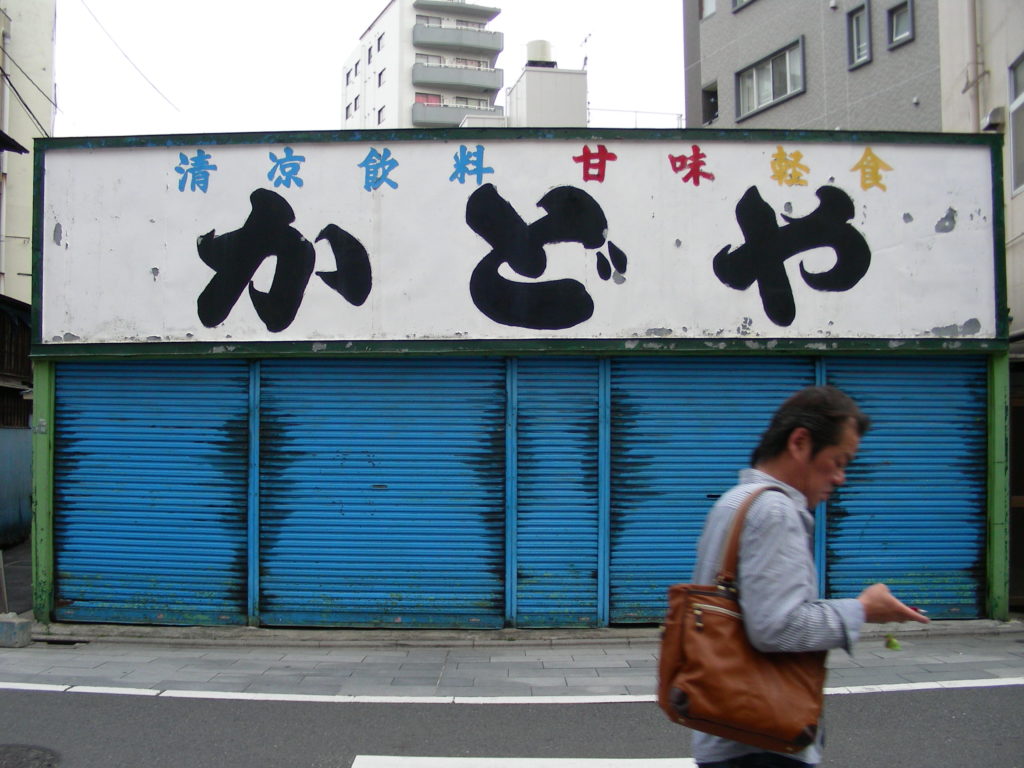
The situation affects the younger generation, constrained to accumulate small jobs without much prospects of promotion, but also concerns increasingly isolated women and older people. Employment insecurity has led to a plunge in revenues for many households, many of which having subsequently disintegrated. Although it had played a crucial role in the affirmation of the Japanese society, the family unit – once able to unite three generations under a single roof – has started to falter following the repercussions of the economic crisis. Accordingly, the number of single-parent families, often involving single-mothers employed part-time, has continually escalated (from 6% in 1990 to 10.5% in 2015). The turn of the century saw the emergence of a now infamous issue, the aging of the baby-boomers (in 2013 the elderly made up 25% of the total population) and the adjacent problem of retirement pension funding. Despite an increase in expenses to solve this impasse, the proportion of elders living underneath the poverty rate, at 19%, is a record high amongst OECD countries.Since the 2008 global economic crisis, the Japanese economic growth stagnates around 1% and its poverty rate remains high: 16.1% of the population lived under the poverty rate in 2012 and decreased slightly to 15.7% in 2015 (in comparison, in 2016, France’s rate was at 8.3% and the United-States’ at 17.8%). The figures attest to a more alarming situation when it comes to single-parents families and children, their respective poverty rate soaring at 58.7% and 16.3, the highest of all OECD countries. From Nobody Knows, presented in the official competition of the 2004 Cannes Film Festival, which highlighted the issue of single-parent families through the lens of a news story, to Shoplifters which deals with poverty-stricken children and retirees, it is clear that some of Kore-eda’s main concerns correspond to the social degradation at play in his country.
Since the 2008 global economic crisis, the Japanese economic growth stagnates around 1% and its poverty rate remains high: 16.1% of the population lived under the poverty rate in 2012 and decreased slightly to 15.7% in 2015 (in comparison, in 2016, France’s rate was at 8.3% and the United-States’ at 17.8%). The figures attest to a more alarming situation when it comes to single-parents families and children, their respective poverty rate soaring at 58.7% and 16.3, the highest of all OECD countries. From Nobody Knows, presented in the official competition of the 2004 Cannes Film Festival, which highlighted the issue of single-parent families through the lens of a news story, to Shoplifters which deals with poverty-stricken children and retirees, it is clear that some of Kore-eda’s main concerns correspond to the social degradation at play in his country.
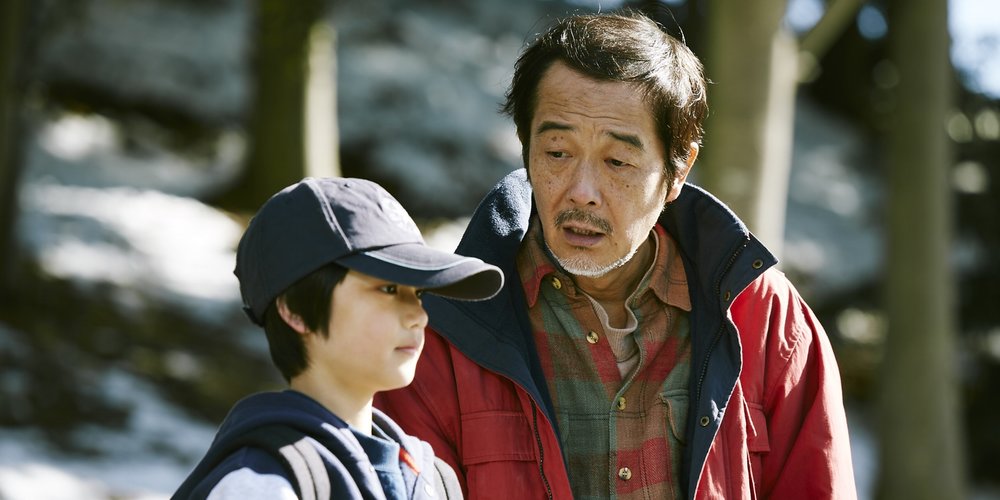
Visibility problems
In a study dedicated to the issue of urban poverty in Japan, after two years of field research, French sociologist Mélanie Hours has emitted the hypothesis that “what is really problematic (in the Japanese archipelago) is not so much the existence of poverty, but (more pressingly) its visibility” [2]. It is in this context that the cited films have a particular worth and resonance. Constructing her thesis around three main arguments, the author has concluded that “the absence of a national poverty rate, the small amount of welfare beneficiaries (only 1.6% of the total population) and common refraining from even employing the term “poverty”, perpetuate the myth of its absence and reveal a deeper issue of denial”. If the myth of a society without poor people is sustained despite the evidence, it is due to the fact that, for a majority of Japanese people, poverty is relegated to the background. It is indeed much easier to remain convinced of the inexistence of misery if it is out of the “ordinary” citizen’s field of view.
Beyond the question of “denial” and of the state and medias’ responsibility, we could add to Hours’ arguments, the fact that a Tokyo inhabitant, in his daily life, doesn’t have many possibilities of encountering, if only visually, the less fortunate. Their non-visibility is to be understood in the most literal sense. The reason lies in the very arrangement of Japanese metropolises. Poorer areas do exist to varying degrees of extent and dilapidation and are, in a city like Tokyo, scattered throughout the enormous urban fabric that represents the Japanese capital. While the capital’s old topography showed a clear distinction between the more affluent areas, often situated in the north-west axis, and working-class neighborhoods situated on the opposite side, its widespread development in the aftermath of the war, has significantly modified this configuration. Now based on a more scattered model of districts, whose main commercial activities are centered around train stations, Tokyo comprises a network of small urban zones on the edge of which are situated the more modest dwellings, consequently far from big transportation passages. Passing by some of the poorer areas when leaving town constitutes a casual part of Europeans’ lives – something relatively unheard of in most Japanese agglomerations.
A second factor which fosters this non-visibility in Japanese cities is the scarcity, if not absence, of beggars and homeless people in animated and touristy areas. It isn’t rare for foreigners, after a trip to Japan, to assume that there are simply no beggars and homeless people. It is important to note that Japan isn’t a traditionally Christian country and that begging, while it isn’t completely forbidden, is regarded as a disgraceful practice. It is therefore useless for homeless people to even go in some areas.
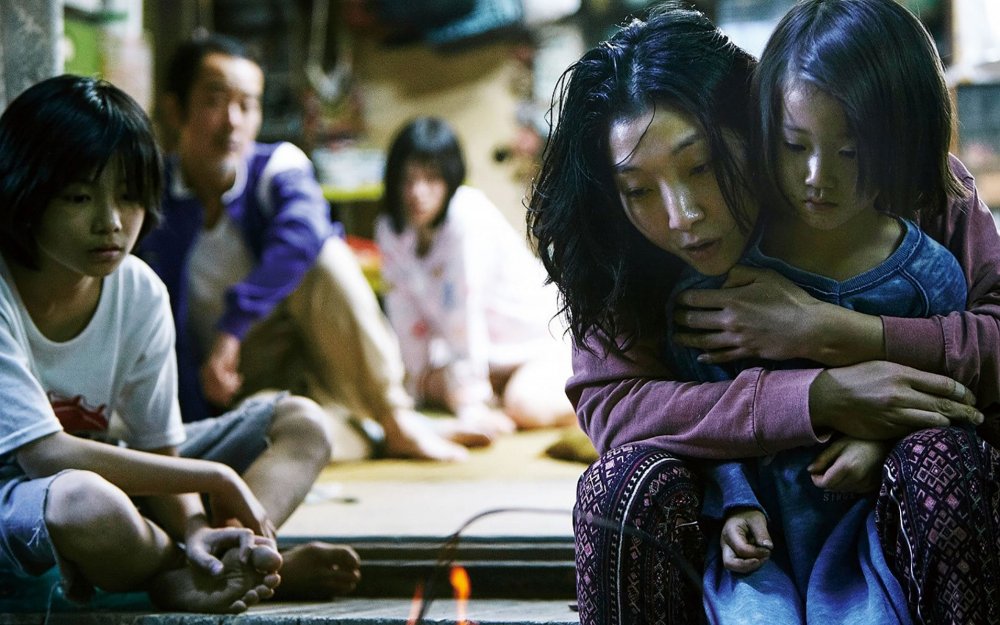
Japanese society rests upon moral values that descend from neo-Confucianism, which, during the Edo era (1603-1868), was elevated to the rank of official ideology. Although the successive constitutions which organized Japan have put a term to the pre-eminence of this ideology, social interactions are still, to this day, in large part influenced by some of its precepts. Begging is considered dishonorable, because in a Confucian-imprinted culture, being a weight for others is shameful.
We should underline that Confucius, in his time, made the distinction between “the superior man”, involved in state affairs and the nation’s future, who’s behavior modeled those of the ancient Sages’, and the “small person”, incapable of controlling and shaping his personal desires. If ever a man were to fall in disarray, in order to preserve the greater good, he would be summoned to take a step back and “live in poverty without any resentment” [3]. Confucius developed this thought in a famous precept, according to which “the archer has a common point with the sage: whenever his arrow fails to reach the target, he must find the causes within himself (rather than accuse anyone else)” [4], implying that the “superior man demands everything from himself (whereas) the small person demands everything of others.” [5].
This trait helps us better understand the reasons for which poverty in Japan is traditionally associated with the notion of worth. A poor individual is the sole responsible of his situation, and shouldn’t rely on other to help him solve his own problems. Indeed Hours in her study shows that the residents of Sanya, one of the poorest districts in Tokyo, while aware of their position of increased weakness facing the crisis, but can’t help but feel responsible for their situation – which evidently constitutes a hindrance to their very desire to better it.
This cultural characteristic rooted in Japanese society doesn’t only explain the absence of begging, but also the fact that a large number of people in need are reluctant to seek out any help from public services. In both cases, the mere thought of becoming a burden to society represents a moral obstacle, difficult to overcome. The situation is comparable, in a way, to the experiences of Japanese hostages in Iraq and Syria. Independent journalists gone of their own free will, they had provoked the contempt of a large portion of society which considered that the State had no obligation to help them get repatriated. The feeling of shame is increased by further societal disdain.
« Oni wa soto, fuku wa uchi » (« Dehors les démons ! Dedans le bonheur ! »)
Rather than benefiting from public assistance, a large majority of the more unfortunate choose to have a professional activity, however arduous and not rewarding. The low unemployment rate (2.8% of the total population in 2017) is to be compared with the fact that 37% of employees have a precarious status (versus 13% in France). Amongst the different type of contracts, let us mention the one of daily worker – like the father in Shoplifters – “referred to as ‘job of the 3Ks’ referencing the words kitsui, annoying, kitanai, dirty, and kiken, dangerous” (6). If such activities make day-rentals at attainable costs possible, the line is thin between such accommodations and being homeless. Indeed a non-renewal of contract, on the table every single day, leads inevitably to the streets. Obviously, this type of employment doesn’t offer any social security net nor the possibility to contribute towards a retirement plan.
Again according to Hours, a majority of the homeless have professional activities, attached to small salaries, like the collection of cans and journal, or even a regular job but which doesn’t permit decent housing. Many homeless people live in communities inside small camping sites. Located in remote areas, sometimes bordering rivers, they are generally hidden from the public eye. Some homeless shelters might be located in public parks, recognizable by the blue covers on top of most of them, but always distanced from the principal passages.
In these areas, community life rather than individual effort is favored first because it facilitates finding an activity but also because of the value of collective effort and support. Although voluntary associations can provide relief at least with regards to the most elementary means of subsistence (medication, food,….) as shown by Kiyoshi Kurosawa in his film Tokyo Sonata (2008), where he films the distribution of free meals, it is still the case, according to Hours, that assistance to the poorest is often organized by the poorest themselves. Just like the characters in Shoplifters who seek to recompose a social group, however small, through which they could regain an identity and which could offer them the opportunity to take-on a set of responsibilities towards a group of people. Such a system, once again, can strongly limit the will to go back to a “normal”, “standard” life.

The problem was further accentuated in the 2000s particularly in Tokyo where the authorities in power proceeded to dismantling homeless shelters, in the name of cleanliness or urban-planning projects, expulsing then relegating their populations to the outskirts of the city. Not only did this worsen the problem of non-visibility, this exclusory political action amounted to widening the divide between the spaces that claim to have eradicated poverty and others, unable to boast the same advantages.
As it is lived in Japan, poverty goes beyond financial and material considerations: being poor is not only defined by a lack of possessions but also as lack of utility to and interest from society as a whole. If the myth of a society rid of its poor can be perpetuated to this day, it is probably due to the fact that the poorest are no longer considered as being an integral, functioning part of society.
The most deprived, in other words, aren’t only relegated to the bottom of the social ladder, but simply excluded of the communal space. The characters of Kore-eda’s film reside in a decrepit house, covered in vegetation, and encircled by tall buildings which gives an eloquent image of this phenomenon of exclusion. In a way, the great poverty found in Japan, reproduces the ancient model of murahachibu, the one which is banished from his village for moral reasons, without any hope of returning. Unlike the excommunicated in ancient catholic countries, who, thanks to the doctrine of repentance, can be hopeful as to a possible reintegration, escaping eternal damnation. The Japanese form of exclusion, makes the lived experience of the banned person, a living hell, dispossessed of what makes him human.
In the steps of Kore-eda, cinema but also literature (for example the novel Tokyo Ueno Station, published in 2014 by Yu Miri which deals with the issue of homelessness), can contribute to a better appreciation of these problems, the main objective for anyone preoccupied by the subject consisting first and foremost in giving back some dignity and consideration to those who have been deprived of any attention at all.
Nicolas Debarle
A specialist of Japanese cinema, Nicolas Debarle is the author of many articles and festival reports published through internet (French online magazines Il était une fois le cinéma, EastAsia). He teaches French in Tokyo where he has been living since 2012.
[1] « Le taux de pauvreté en augmentation au Japon », 2014, https://www.nippon.com/fr/features/h00072/
[2] Mélanie Hours, « La pauvreté urbaine au Japon », p. 9, 2007, https://journals.openedition.org/transcontinentales/747
[3] Entretiens de Confucius, XIV, 11, p. 112, traduction d’Anne Cheng, Ed. du Seuil, 1981
[4] L’invariable milieu dans Les Quatre Livres, p. 34, édition électronique en ligne, https://gallica.bnf.fr/ark:/12148/bpt6k5421352k
[5] Entretiens de Confucius, XV, 20, p. 124
[6] Mélanie Hours, 2007, p. 5

